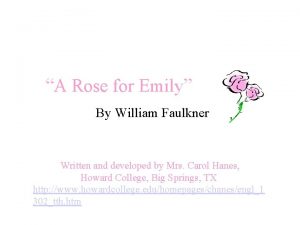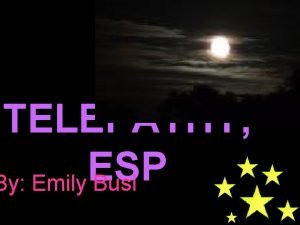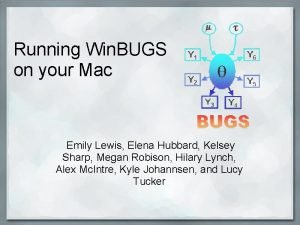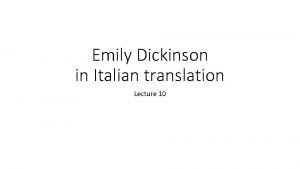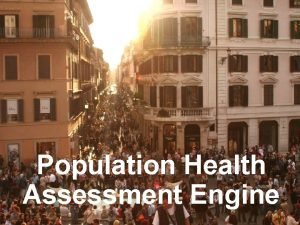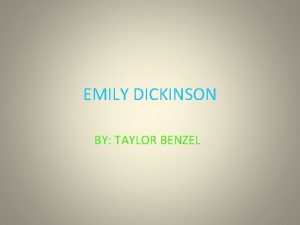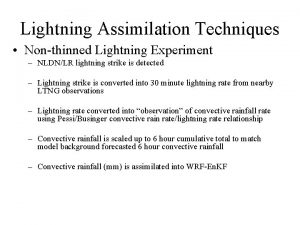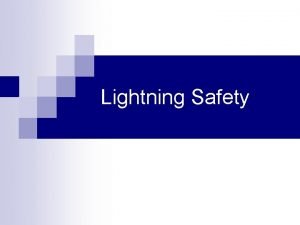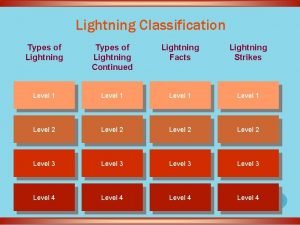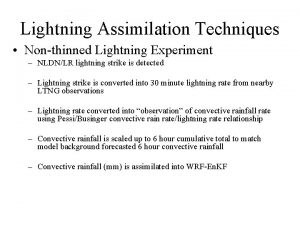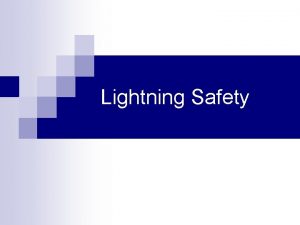Lightning Emily Loedding 1 What is Lightning Lightning







- Slides: 7

Lightning Emily Loedding 1

What is Lightning? Lightning is defined as “a flash of light produced by a discharge of atmospheric electricity” (Webster 2018). According to NASA, this atmospheric electricity is a result from a mixture of warm water droplets and cold ice-crystals bumping into each other and creating a static electrical charge. Lightning bolts are measured by their voltage and distance from certain areas, but scientists are still working on ways to accurately measure voltage, therefore distance is the strongest tool for measuring today (Pasek 2016). 2

Who is At The Greatest Risk? Big hotspots include: Indonesia, Argentina, Central Florida, Himalayan Forelands, North western South America, and Democratic Republic of the Congo. The lightning hot spot is a small section of northwestern Venezuela near lake Maracaibo (King 2018). According to the CDC, males aged 15 -34 years old that work outdoors or spend large amounts of time outdoors are at the greatest risk. 3

Lightning Consequences Lightning strikes can cause serious an even fatal injuries to people as well as livestock or other animals that are left outside during a thunderstorm. Being struck by lightning can induce heart attacks, burns, broken bones, or other trauma. Lightning strikes can also cause significant damage to buildings, especially sky-scrappers like the Empire State Building which is struck by lightning approximately 100 times every year (ABC News 2011). 4

How Can We Protect Ourselves? ■ Before a lightning storm: always check the weather before outdoor activities and always seek shelter if you hear thunder. ■ During a lightning storm: – Inside: avoid using electronic devices (i. e. computers, oven, microwave), avoid water and stay away from windows and doors. – Outside: seek shelter, do not lie on the ground or seek shelter under a tree. The best places to seek shelter are a fully enclosed vehicle or structure. ■ After a lightning storm: check a victim to see is breathing, has a pulse, burns, shock and trauma while moving yourself and the victim indoors or away from the site (CDC 2014). 5

Multiple Choice Questions 1. What part of the world is referred to as the lightning hot spot? a) Central Florida b) Argentina c) Northwestern Venezuela 2. What is the number one thing to do to prepare before a lightning strike? a) Check the weather before going outside b) Avoid using electronic devices c) Standing underneath a tree for shelter 3. Which is NOT a proper course of action when helping a lightning strike victim? a) Checking for a pulse b) Checking for evidence of burns or broken bones 6 c) Avoid touching the victim because you could be electrocuted

Annotated Bibliography 1. Center for Disease Control and Prevention. (2014, June 27). Frequently Asked Questions (FAQ) about Lightning Strikes. Retrieved from: https: //www. cdc. gov/disasters/lightning/faq. html 2. National Aeronautics and Space Administration. (2007, December 9). How Is Lightning Made. Retrieved from: https: //www. nasa. gov/audience/forstudents/k 4/home/F_What_Causes_Ligh tning_Flash. html 3. King, Hobart M. (2018). World Lightning Maps: Lightning is not uniformly distributed across the Earth. Retrieved from: https: //geology. com/articles/lightning-map. shtml 7
